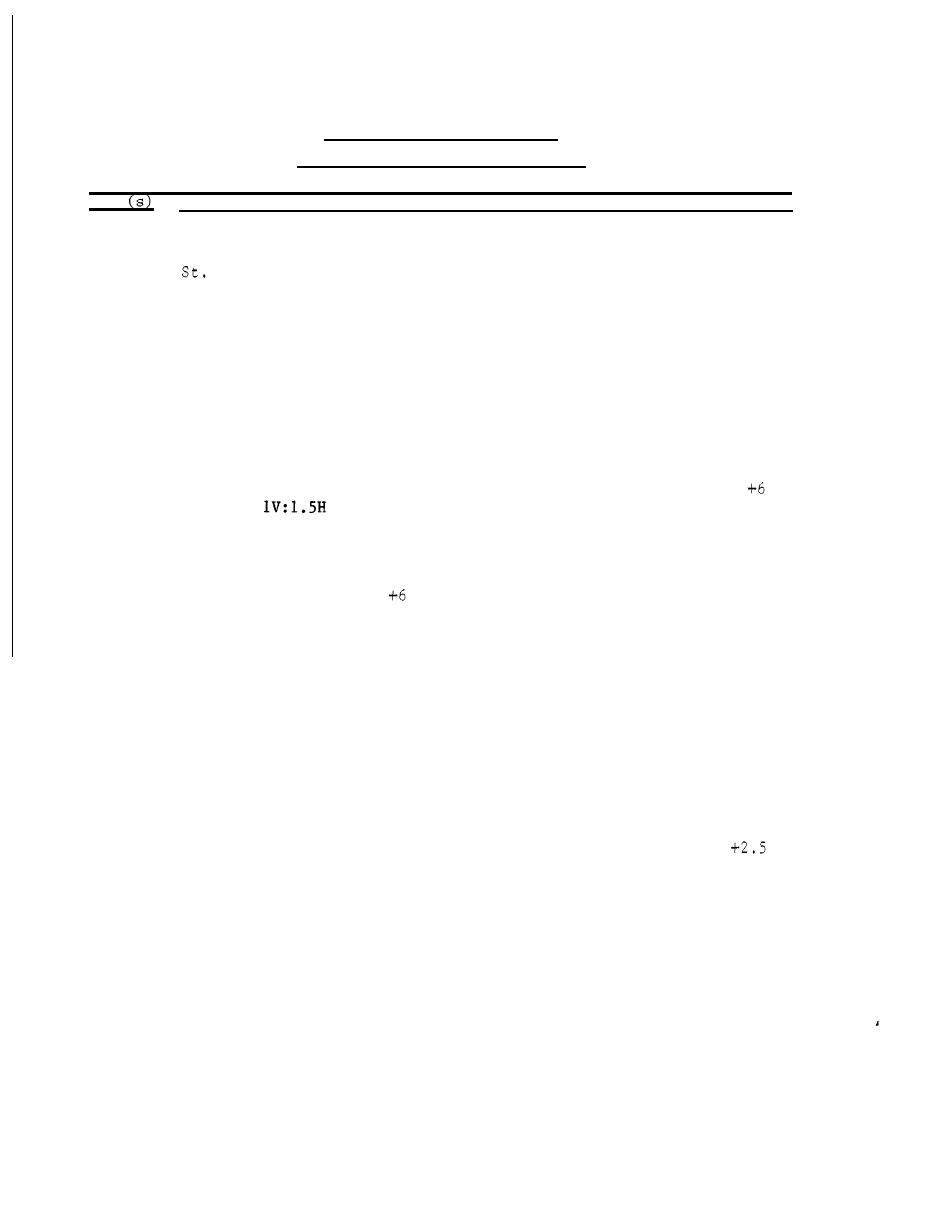
T le 30
a
Panama City Harbor Jetties
Panama City Harbor, Florida, SAM
Date
Construction and Rehabilitation History
1910-
The River and Harbor Act of 1910 authorizes a 22-ft-deep by 200-ft-
wide channel through East Pass connecting the Gulf of Mexico to
1933
Andrews Bay with maintenance dredging being done at the existing
natural channel.
Congress reauthorized the project providing for a 29-ft-deep by
1933-
1934
450-ft-wide entrance channel. A man-made channel was cut through
Lands End, and jetties were built (Figures 47 and 48) to provide
channel protection. As constructed, the east and west jetties were
800 and 850 ft long, respectively, and spaced approximately 1,500 ft
apart. The inner 300 ft of each jetty (hereafter called the jetty
wings) flared out at a 30-deg angle from the channel centerline.
The seaward end of each jetty was constructed out to about the
-12 ft mlw depth contour. The jetties were of rubble-mound con-
struction built to a crest width of 8 ft, a crest elevation of
ft
mlw, and
10-ton cover stone was placed over core stone which was in turn
placed on a 2-ft-thick stone foundation blanket. With the exception
of the landward 175 ft of each jetty, steel sheet pile (varying in
length from 15 to 40 ft) was placed along the jetty centerline to
ft mlw. A total of 34,100 s q ft of sheet
the crest elevation of
pile was driven and 1,340, 1,360, 10,350, and 12,240 tons of apron,
foundation, core, and cover stone were placed, respectively. The
total cost of the jetties was 8,000.
During this time extensions were made to the landward ends of the
1935-
jetties t o prevent channel erosion, undermining, and possible flank-
1942
ing of the jetties. The jetties also received minor repairs. Most
of the stone repairs and wing extensions used 4- to 8-ton capstone
and 25- to 2,000-lb corestone.
Deterioration of the jetties began almost immediately, and extensive
1935
repairs, primarily to the jetty wings, were undertaken. Jetty wings
were rebuilt and extended shoreward with steel sheet-pile bulkheads.
The sheet-pile bulkheads were driven to a crest elevation of
ft
mlw and were 800 and 1,050 ft long on the east and west wings,
respectively. A total of 40,800 sq ft of sheet pile was placed.
The total cost of the bulkheads and maintenance dredging was
6,000.
Within 6 months of completion, the west jetty bulkhead was almost
1936
entirely destroyed, and the east jetty bulkhead was badly damaged.
A total of 1,173 lin ft of sheet pile were redriven, and 4,730 tons
of rock riprap were placed along the base of the sheet pile. Also
(Continued)
(Sheet 1 of 6)
85



 Previous Page
Previous Page
